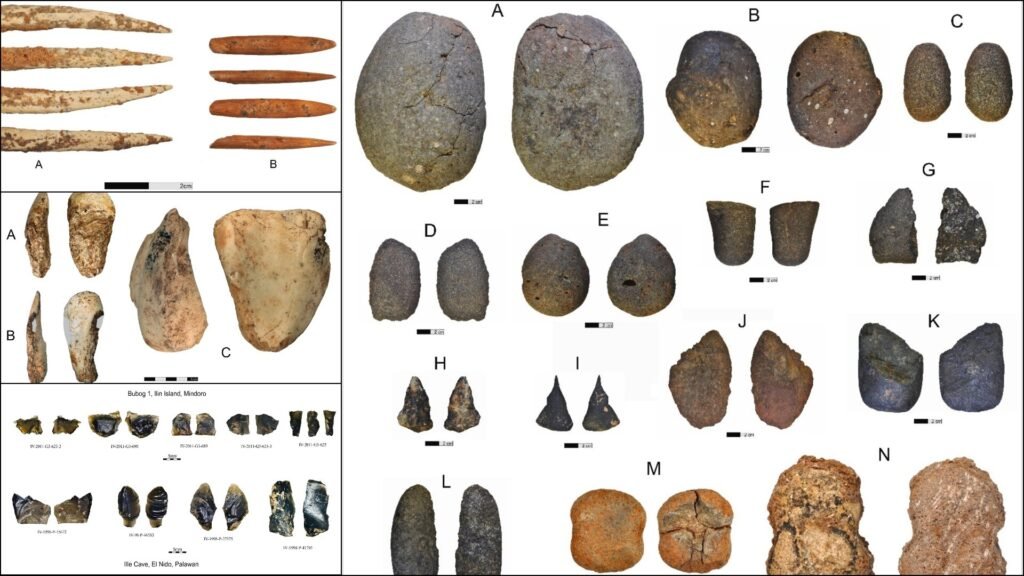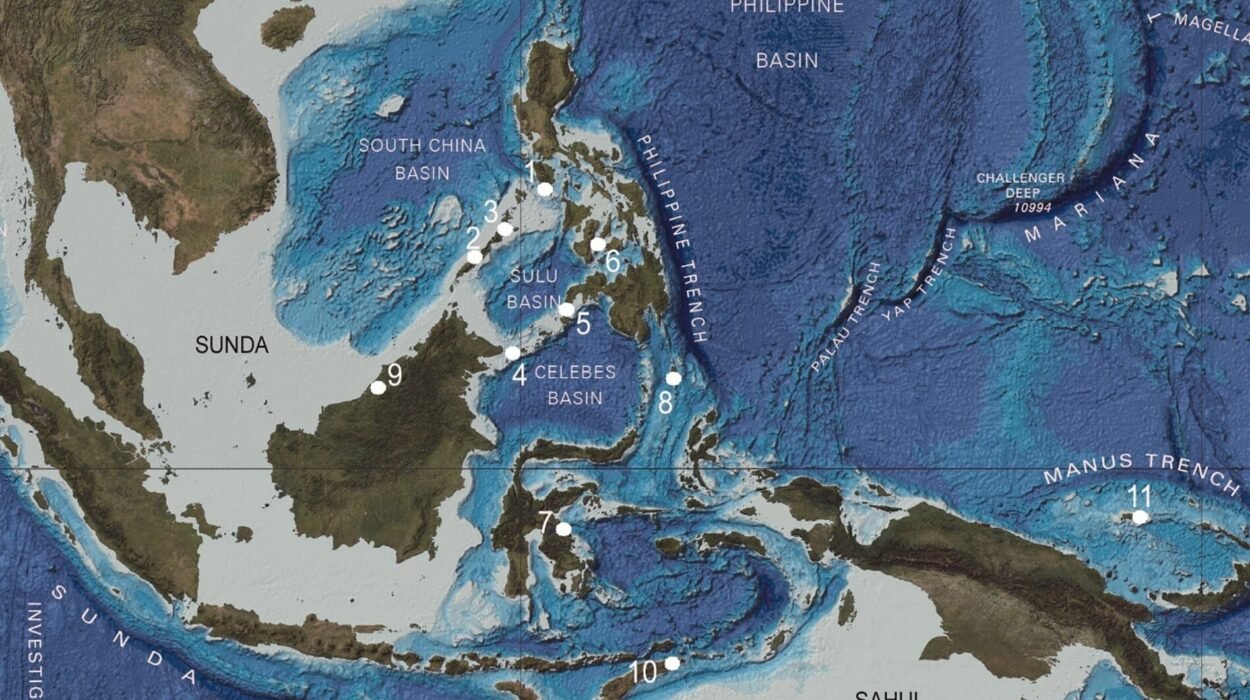Over the past 15 years, researchers from Ateneo de Manila University, in collaboration with international experts and institutions, have unraveled a compelling and transformative story that redefines our understanding of the Philippines’ role in the ancient maritime world. Their work has illuminated the pivotal role of the Philippine archipelago in early human migration, technological advancement, and intercultural relations throughout maritime Southeast Asia. These remarkable findings, published in the Archaeological Research in Asia journal, draw upon extensive archaeological research conducted in Mindoro, a key island in the Philippine archipelago.
The Mindoro Archaeology Project has uncovered evidence that pushes back our understanding of human settlement in the Philippines by over 35,000 years. It provides a new narrative of human ingenuity, revealing how early populations harnessed the natural world, adapted to the region’s maritime environments, and engaged in long-distance cultural exchanges that would lay the foundation for much of Southeast Asia’s future development.
Unearthing Ancient Maritime Networks: The Evidence from Mindoro
The Mindoro Archaeology Project focuses on the island of Mindoro in the Philippines, particularly areas like Ilin Island, San Jose, and Sta. Teresa in Magsaysay. Mindoro, much like the rest of the main Philippine islands except for Palawan, was never connected to the Southeast Asian mainland via land bridges or ice sheets. This means that its early human settlers had to rely on sophisticated maritime technologies to reach the island, paving the way for significant technological innovations in navigation, survival strategies, and the exploitation of marine resources.
The discovery of early human remains, animal bones, shells, and a variety of tools made from stone, bone, and shell provides substantial evidence of a highly developed society that thrived in this region thousands of years ago. These tools show how ancient populations not only adapted to land environments but also effectively utilized marine resources. The evidence suggests that as early as 30,000 years ago, these early humans possessed advanced seafaring skills, which enabled them to navigate vast stretches of open water and engage in long-distance exchanges across the archipelago.

Technological Innovations and Seafaring Mastery
Perhaps one of the most groundbreaking revelations of the Mindoro Archaeology Project is the discovery of evidence for sophisticated maritime technologies dating back more than 30,000 years. Early inhabitants of Mindoro demonstrated remarkable skill in fishing, as they were able to catch predatory open-sea fish species like bonito and shark. This required the development of specialized fishing tools and techniques that were crucial for survival in the challenging marine environments of Southeast Asia.
A particularly fascinating discovery was the use of shells as raw material for tools, a practice that dates back over 30,000 years. One of the most notable examples of this ancient innovation is the manufacture of adzes from giant clam shells (Tridacna species), which were used for woodworking and other tasks. These shell adzes, dating back between 7,000 and 9,000 years ago, bear striking similarities to tools found across Island Southeast Asia and even as far away as Manus Island in Papua New Guinea, over 3,000 kilometers from Mindoro. The similarity in tool design suggests not only advanced technology but also the existence of long-distance cultural exchange networks that spanned vast distances, linking communities across the region.
Insights into Burial Practices and Social Complexity
One of the most intriguing finds of the Mindoro Archaeology Project was the discovery of a human burial site on Ilin Island, dating to around 5,000 years ago. The remains were laid to rest in a fetal position, and the grave was covered with limestone slabs. This type of burial, known as a “flexed burial,” is a common practice found across Southeast Asia, hinting at shared cultural practices and a broader interconnectedness across the region.
The careful attention to burial rituals indicates that these early inhabitants possessed a level of social organization and ideological beliefs that transcended local boundaries. The use of specific burial techniques, such as the covering of the body with stones, points to a shared cultural heritage, possibly influenced by spiritual or religious beliefs, and suggests the existence of complex social structures. These practices provide a glimpse into the early development of societal norms and customs across the maritime networks that spanned Southeast Asia.
Mindoro and the Maritime Network of Ancient Southeast Asia
The findings from Mindoro reveal a much more extensive and interconnected world of early human migration than previously believed. Archaeological evidence suggests that the Philippine archipelago, and particularly Mindoro, was part of a vast maritime network that existed as early as the Stone Age. This network enabled cultural and technological exchange across the islands of Southeast Asia, fostering the development of unique local traditions while simultaneously linking disparate communities.
Mindoro’s position as a maritime hub likely facilitated the flow of ideas, materials, and technologies between different groups. The evidence of long-distance trade and communication, evidenced by the distribution of shell tools and other artifacts, shows how these early maritime routes were used for the exchange of goods and knowledge. The region’s early inhabitants were not isolated but were active participants in a broader maritime economy that stretched across the islands of Southeast Asia, from the Philippines to the Indonesian archipelago and beyond.
The research suggests that these early populations in the Philippines were not merely surviving but thriving, developing sophisticated subsistence strategies that made use of both terrestrial and marine resources. Their ability to navigate the seas, catch large fish species, and create advanced tools from local materials was indicative of a highly skilled and resourceful society. Over time, this would contribute to the cultural and technological innovations that would shape the region’s history for millennia.
Filling the Gaps in Southeast Asian Prehistory
The Mindoro Archaeology Project fills an essential gap in the prehistoric record of the Philippines and Southeast Asia as a whole. Previous archaeological studies have often focused on mainland Southeast Asia, with the Philippines seen as a peripheral region. However, the latest findings demonstrate that the Philippines, particularly Mindoro, played a far more integral role in the development of ancient maritime cultures than previously acknowledged.
By shedding light on human habitation in the Philippines over a long period, the project redefines the region’s significance in the broader narrative of human migration and adaptation across Southeast Asia. The evidence of early seafaring, advanced tools, and long-distance cultural exchange challenges previous assumptions about the isolation of the Philippine archipelago and provides a more comprehensive understanding of the complex web of human settlement in Island Southeast Asia.
The Significance of These Discoveries
The findings of the Mindoro Archaeology Project have significant implications not only for understanding the history of the Philippines but also for the broader history of human migration and adaptation in Island Southeast Asia. They challenge conventional narratives about early human movement and settlement and offer new insights into the development of maritime cultures in the region.
One of the most striking aspects of this research is how it highlights the ingenuity and adaptability of early human populations. The ability to develop sophisticated technologies for seafaring and fishing, combined with a rich social and cultural life, demonstrates the resilience and resourcefulness of these ancient peoples. The evidence from Mindoro serves as a reminder that human societies have long been capable of overcoming environmental challenges through innovation and cooperation.
Furthermore, these discoveries underscore the importance of understanding the interconnectedness of early human societies. The extensive maritime networks that linked Southeast Asia’s islands fostered the exchange of ideas, technologies, and cultural practices that enriched the region’s history. By documenting these connections, the Mindoro Archaeology Project contributes to a more nuanced understanding of the prehistoric world and the forces that shaped it.
Conclusion: Redefining the Philippines’ Role in Ancient Maritime History
The results of the Mindoro Archaeology Project offer a profound new perspective on the Philippines’ role in the ancient maritime world. By uncovering evidence of sophisticated seafaring technologies, long-distance trade, and shared cultural practices dating back over 35,000 years, the project reveals a much more interconnected and dynamic history than was previously understood.
The findings not only challenge previous assumptions about early human migration in Southeast Asia but also highlight the critical importance of the Philippine archipelago in the broader context of maritime Southeast Asia. As researchers continue to explore and document the rich history of the region, it is becoming clear that the Philippines, far from being a peripheral part of ancient maritime networks, was a key player in the development of early human societies across Southeast Asia and beyond.
In the end, the Mindoro Archaeology Project not only enriches our understanding of ancient maritime cultures but also provides valuable insights into the resilience, innovation, and interconnectedness of early human societies that continue to resonate in the present day.
More information: Alfred F. Pawlik et al, Chronology and ecology of early islanders in the Philippines: The Mindoro Archaeology Project, Archaeological Research in Asia (2025). DOI: 10.1016/j.ara.2025.100616
